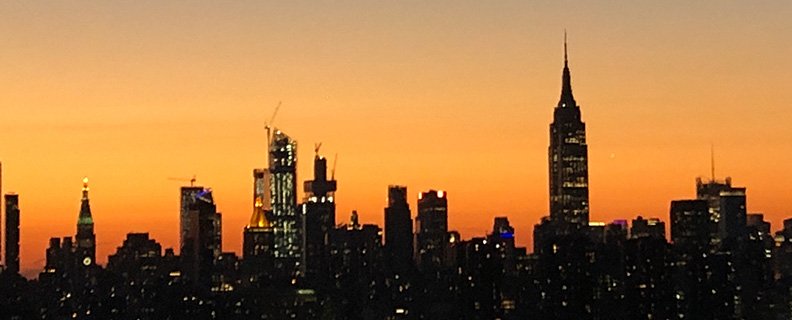NYC Climate Mobilization Act 2019 – It’s Not What You Think
On Earth Day, April 22, 2019, Mayor de Blasio signed into law a new piece of legislation that will create an ambitious cap on CO2 emissions from NYC buildings. The legislation – Intro #1253 – creates emissions limits for NYC buildings for most buildings larger than 25,000 square feet.
These building emissions targets will go into effect in 2024 and will become progressively stricter leading to 2050. Buildings that create more than the maximum allowable emissions will be fined based on the amount that their building emissions exceed the proposed limits. This will provide a powerful incentive for building owners to reduce their energy use and carbon emissions. Buildings are responsible for close to 70% of our city’s total emissions, so this initiative will lead to major progress toward the city’s goal to reduce our emissions 80% by 2050.
Stas Zakrzewski, who is a principal at ZH Architects, holds board positions at New York Passive House and is part of the AIA Committee on the Environment Policy committee and together with other industry professionals and stakeholders have presented to the City Council on this topic. Based on this experience, we think that there are several important points to communicate to building owners and professionals now that the bill has passed, and most importantly underscore that these goals are attainable.
Don’t Fear – Passive House is here!
There is no doubt that these new requirements are a dramatic change from business as usual. This bill makes NYC a leader globally, and it will indeed trigger the requirement for a large amount of energy retrofits. While some owners have reacted in fear from the announcements of this bill, there is no need to dread this change. There are tried and true methods that are proven to reduce building energy use to the 2035 limits and much lower. Passive House design strategies are one of the most effective ways to dramatically reduce building energy use in a cost effective way. The strategies used for Passive House retrofits and construction are simple and straightforward – improve air tightness, insulate provide energy recovery ventilation for fresh air, and reduce thermal bridges. ZH Architects has a wide range of experience with Passive House construction for both retrofits and new buildings at a wide range of scales. The graph below shows a number of projects by ZH Architects in design and construction, and how they currently meet even the most stringent 2035 emissions target.
New Buildings – Look out!
This legislation is targeted to existing buildings, but it is important to note that once a new building is completed, it will immediately be subject to the emissions limits of this bill. To this end, it makes sense to consider these new requirements when beginning a new project sooner rather than later in order to best plan for compliance or risk being fined.
The Upshot
Any building can be renovated or constructed to meet these new limits, whether it is 100 years old, currently in construction, or early in the planning phases and although it takes some effort there are strategies in place to achieve compliance.
The Unexpected Benefit
There are direct financial and health related benefits from improving a building’s performance. Owners will have reduced energy bills, which is money saved, and will pay back the initial investment over time. The city will also implement a carbon trading program so that Buildings that exceed the requirements will be able to sell credits to buildings that have not met the targets. A properly designed high performance retrofit will also result in a more comfortable and healthier interior environment with clean air, stable temperatures, and no pollutants, dust, or allergens. Better air sealed and insulated buildings also reduce water infiltration and leaks, increasing the durability and longevity of the building envelope.


